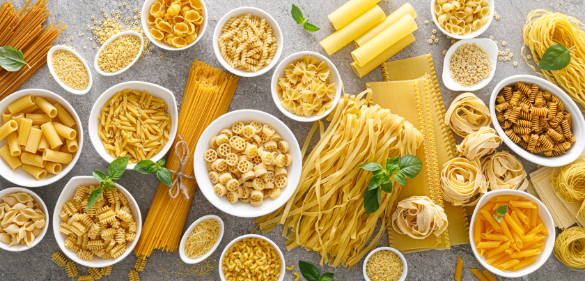TIPS ON ITALY by Tonya Clement
350 Shapes of Tradition: Exploring Italy’s Incredible Variety of Pasta

Did you know that Italy is home to more than 350 different types of pasta? That’s right—more than 350 unique shapes, each with its own name, origin, and purpose. From the familiar spaghetti and penne to the regional specialties like trofie, orecchiette, and malloreddus, pasta in Italy is far more than a meal—it's a reflection of regional identity, history, and ingenuity.
Pasta Isn’t Just Pasta
To outsiders, pasta might seem like a simple carb canvas for sauce. But for Italians, pasta is deeply tied to where you are and who you’re with. In Sicily, you might be served bucatini with sardines and wild fennel; in Apulia, the ear-shaped orecchiette are handmade and tossed with broccoli rabe. Up north in Liguria, short twisted trofie are perfectly designed to catch the creamy richness of fresh pesto.
Each shape has a story—and a sauce it loves. For example:
- Penne rigate (with ridges) are made to cling to hearty meat sauces.
- Tagliatelle is the classic companion to ragù alla Bolognese.
- Conchiglie (shells) nestle into baked dishes, hiding bits of cheese and sauce.
- Fusilli’s spiral shape traps every drop of pesto, tomato, or cream.
A Dish Defined by Region
What makes Italian pasta truly special is how closely it’s tied to place. The shape and preparation of pasta reflect not only local ingredients, but local history, climate, and tradition.
- Sardinia gives us malloreddus, tiny saffron-colored ridged gnocchi served in a sausage ragù.
- Emilia-Romagna, Italy’s pasta heartland, is known for tortellini, lasagna, and tagliatelle—often made with rich egg-based dough.
- Veneto offers bigoli, thick spaghetti-like strands traditionally made with duck eggs.
- Campania, the birthplace of dried pasta, perfected shapes like ziti and paccheri for their tomato-heavy cuisine.
Even pasta's drying process varies—some are sun-dried in the southern air; others are fresh, soft, and rolled by hand just before mealtime.
Pasta as Cultural Heritage
Why so many shapes? Italians believe that the right pasta shape enhances the flavor, texture, and overall experience of a dish. It’s a form of edible craftsmanship passed down through generations. Grandmothers (nonne) across the country still gather to roll, cut, and shape pasta by hand—an act of love, tradition, and pride.
The names themselves often tell charming stories:
- Strozzapreti (“priest-stranglers”)—perhaps named by hungry peasants
- Farfalle (“butterflies”)—delicate and festive
- Cavatelli (“little hollows”)—perfect for scooping up sauce
Try Something New
So next time you’re choosing pasta, venture beyond spaghetti. Pick up a box of pici, calamarata, or garganelli and discover a new texture, shape, and story. Better yet, try making one of the simpler shapes at home—like gnocchi or tagliatelle—and connect with a tradition that has shaped Italian kitchens for centuries.
With over 350 pasta shapes and countless regional variations, Italy reminds us that even something as humble as flour and water can become a symbol of place, culture, and creativity. Pasta isn’t just a meal—it’s a language, a legacy, and a delicious way to explore Italy one bite at a time.










